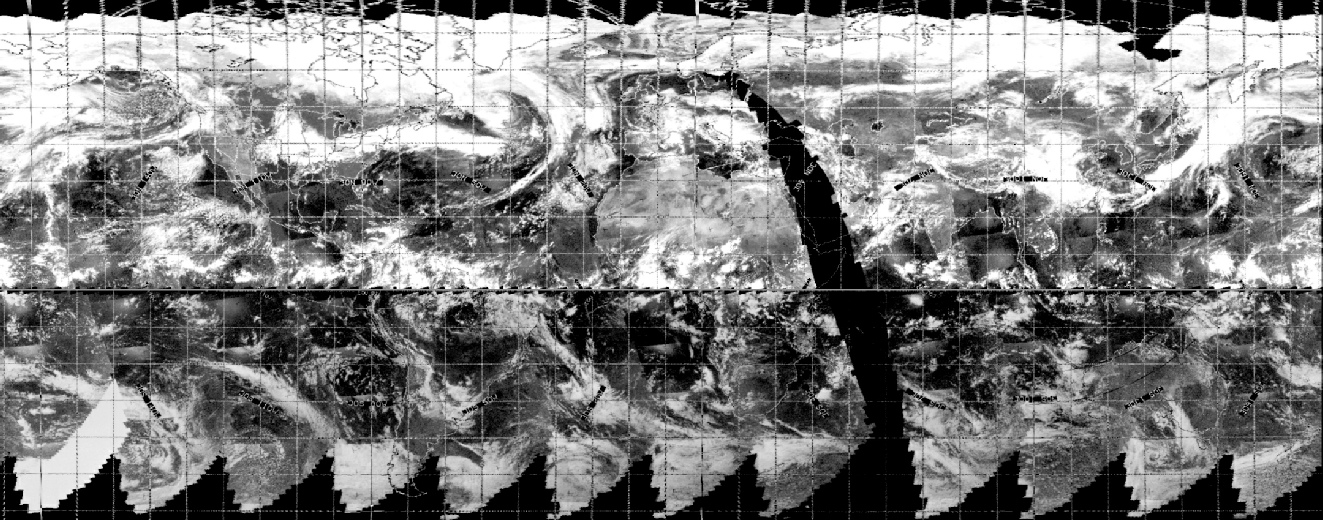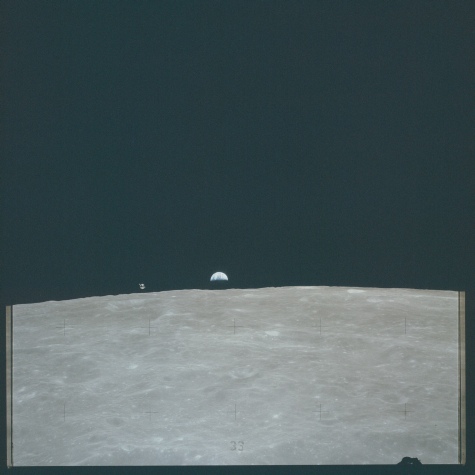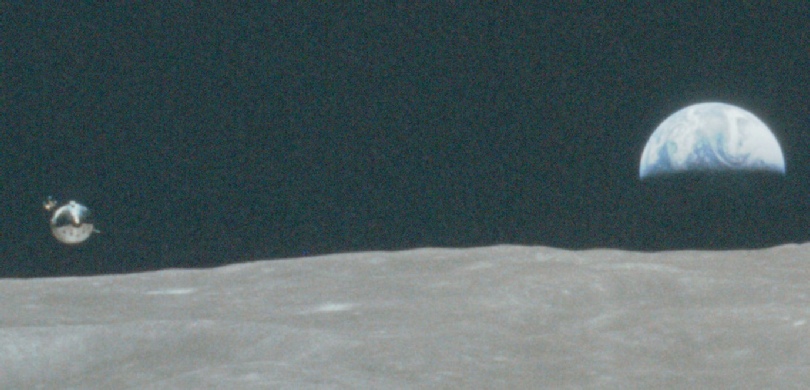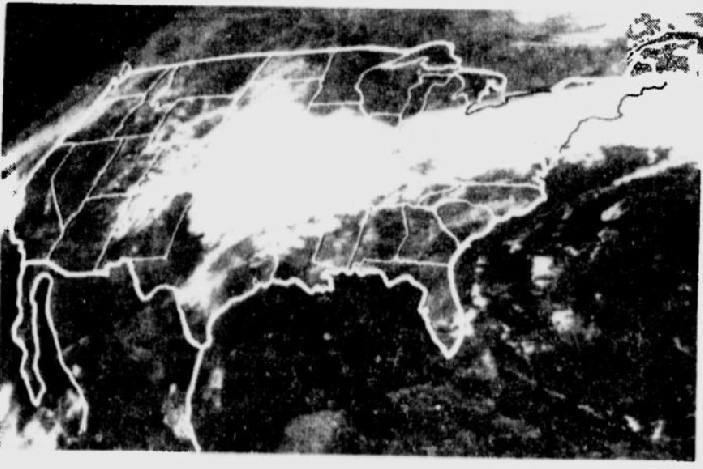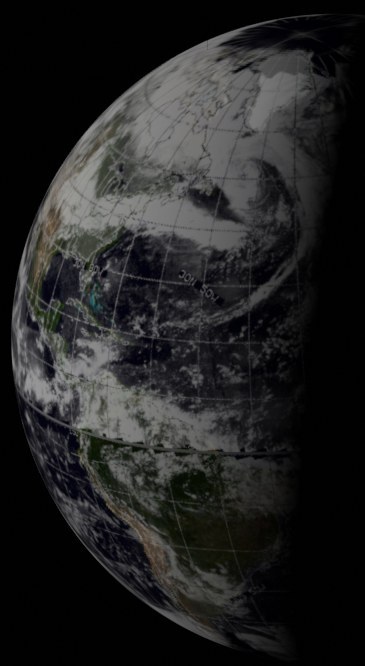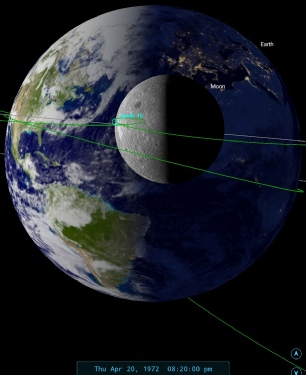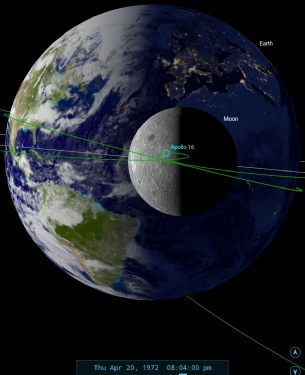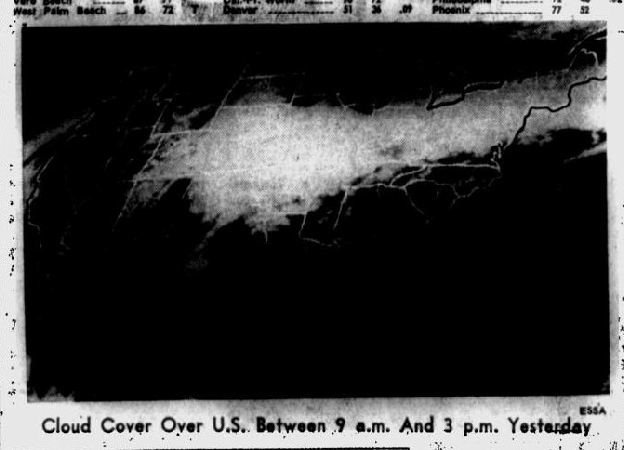4.8.5 - Apollo 16 Day 5 - Separation anxiety
The next Apollo picture to be looked at, AS16-113-18289 (source: ALSJ) is one of a series of the most spectacular Apollo images, showing the CSM on the lunar horizon as the Earth rises behind it. It is, therefore, taken from the lunar module after separation from the CSM (the first half a dozen photographs in this magazine are of the CSM immediately after separation) but before the landing. This puts a timeframe for the image of between 18:07 on the 20th, and 02:23 on the 21st.
Figure 4.8.5.2: AS16-113-18289 compared with ESSA satellite data, 3D reconstruction, ESSA satellite image dated the 20th and published in the Sarasota Herald Tribune (above) and the St Petersburg Times (right), on the 21st, and two SkySafari time depictions.
Since the last photograph Earth has moved on again, and once again north America is the focus of the image with a different set of weather patterns, all of which match up with the satellite images taken on the same day, the 20th.
The reason for the two SkySafari depictions is that while we have this comment in this transcript:
098:10:38 Duke (LM onboard): There it comes.
098:10:45 Duke (LM comm): Okay, Ken, we're getting Earthrise.
Which converts to 20:06, the SkySafari model doesn’t seem to put the spacecraft in the right place, that time would seem to be 20:20, according to the model. Apollo 16 is now two separate spacecraft, but only by about 1 mile, so in terms of the scale here the difference is insignificant. The now separate LM do remark on a later Earthrise:
100:04:44 Duke (LM comm): Here comes Earthrise. See it?
100:04:52 Young (LM comm): Yeah.
100:04:53 Duke (LM comm): That's spectacular.
but by this time too much of the Pacific would be visible - this is the only Earthrise that matches.
Regardless of the discrepancy, there is no mistaking the fact that Earth in the photograph and the satellite images are an exact match. Models are only as good as the data they’re built on. Certainly there were problems with establishing the correct CSM orbital parameters, and this might have an influence.
ESSA's orbit for that time would have commenced at 20:00 (track 3, orbit 4358), so there is a perfect reason for a good match.
The photo index for Apollo 16 (source: ALSJ) states that this Earthrise sequence took place on revolution 12, but this is likely to be a difference in interpretation as to when orbit 12 ended and 13 started. Certainly the first image after the Earthrise sequence (of the CSM) is marked as being on orbit 13. It can't have been at the start of orbit 12, as this would have Africa in view, and very little of north America.
The next images of Earth are from the lunar surface, and you can click on the link below to see them.
